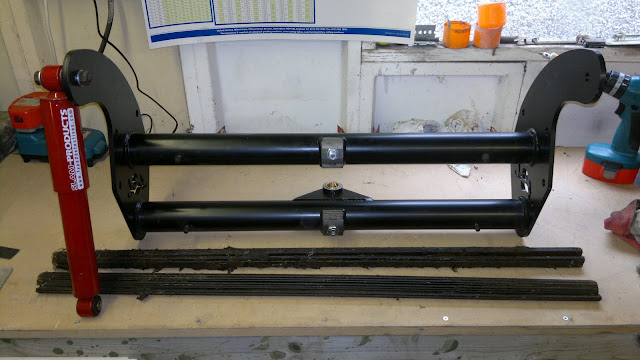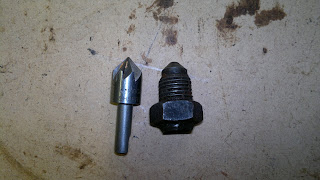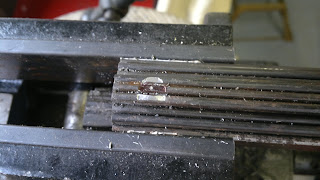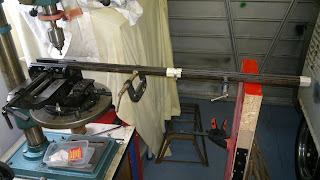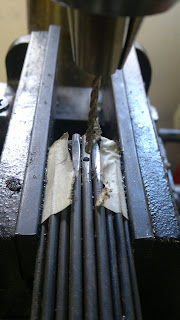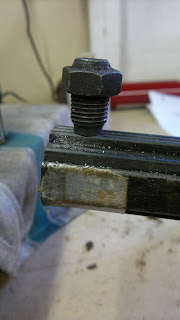I had to make the decision a while ago if I should make my own narrowed beam or buy one.
This wasn't to tuck my wheels under my arches as far as I could but to help with the offset of the Porsche Fusch wheels I needed to fit under my arches.
As you can see above I decided to buy a Type 2 Detectives 4" narrow beam, I worked out I only needed 2" to get the wheels under the arch and in line with the rear wheels but was persuaded to buy a 4" beam to help with clearences.
I dragged my old leaf springs out of the shed where they have been wrapped in oily rags since I pulled the king and link pin beam of the van years ago.
I made some 12mm spacers for the top mount, the spacer ended up sitting inside the rubber of the mount and the shock was just 2mm away from the beams side. I may make these out of steel and longer with a lip inside.
Using a flat surface I marked the distance with the seal pressed against the surface plate
Then used a vernier to get the gap measurment
Getting all excited about getting the beam together I thought I'd check the trailing arms in the beam but the trailling arm got stuck in the bearing so I thought I wouldn't push it all the way.
I used the trailing arms slid on to the leaf to line them up and held in place with G clamps (dog is non load bearing)
Rather than waste my energy with a hacksaw I now have a chop saw that will give me a nice square cut.
But it did take a bit of faffing to get it all at the correct height. This is the only time I've used a wheel ramp
A quick clean up with the sander.
To get the angled hole in the end I used this counter sink bit.
I had a quick try out with a scrap piece of leaf spring to get the depth right.
To stop the drill from slipping off the radius of the leaf spring I spotted the face before centre punching.
To get the springs to sit square for drilling it took a bit more setting up.
A pilot drill hole to keep the counter sink square
The depth was judged by eye
A quick trial to check depth and hole position.
I'll just need to get the parts cleaned up and painted before I start fitting them.























